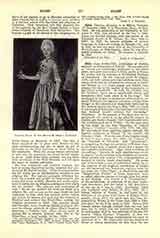

Allen, John (1476-1534), Archbishop of Dublin, canonist, and Chancellor of Ireland. He was educated at Oxford and Cambridge, graduated in the latter place, and spent some years in Italy, partly at Rome, for studies and for business of Archbishop Warham of Canterbury. He was ordained priest August 25, 1499, and held various parochial benefices until 1522, about which time he attracted the attention of Cardinal Wolsey (q.v.), whose supple and helpful commissary he was in the matter of the suppression of the minor monasteries. As such, his conduct, says Dr. Gairdner, “gave rise to considerable outcry, and complaints were made about it to the king”. He continued to receive ecclesiastical advancement, assisted Wolsey in his legatine functions, among other things “in the collusive suit shamefully instituted by the cardinal against the king in May, 1527, by which it was sought at first to have the marriage with Katharine declared invalid without her knowledge” (Gairdner). In the summer of the same year he accompanied the cardinal on his splendid mission to France, and finally (August, 1528) was rewarded with the archiepiscopal see of Dublin. At the same time he was made by the king Chancellor of Ireland (Rymer, “Foedera”, London, 1728, XVI, 266, 268). He was relieved from asserting, against Armagh, the legatine authority of Wolsey by the latter’s fall (October, 1529). With the rest of the English clergy he had to pay a heavy fine (1531) for violation of the “Statutes of Provisors” and “Praemunire”, in recognizing the legatine authority of Wolsey, then, in the king’s eyes, a heinous crime, and a reason for the cardinal’s indictment. Allen wrote a treatise on the pallium, “Epistola de pallii significatione actives et passives” on the occasion of his reception of this pontifical symbol, and another “De consuetudinibus ac statutis in tutoriis causis observandis.” He seems also to have been a man of methodical habits, for in the archives of the Anglican archdiocese of Dublin are still preserved two important registers made by his order, the “Liber Niger”, or Black Book, and the “Repertorium Viride”, or Green Repertory, both so called, after the custom of the age, from the color of the binding. The former is a “chartularium” of the archdiocese, or collection of its most important documents, and the latter a full description of the see as it was in 1530, Archbishop Allen was murdered near Dublin, July 28, 1534. As a former follower of Wolsey, he was hated by the followers of the great Irish house of Kildare (Fitzgerald), whose chief, the ninth earl, had been imprisoned by Wolsey in the Tower from 1526 to 1530, and again, by the King, early in 1534. Soon a false rumor spread through Ireland that the earl had been put to death, and the archbishop was killed in consequence of it by two retainers of his son, the famous “Silken Thomas” Fitzgerald. It does not appear that Lord Thomas contemplated the crime or approved of it. He afterwards sent his chaplain to Rome to obtain absolution for him from the excommunication incurred by this murder. Sir James Ware says of Allen (“Works”, ed. Harris, Dublin, 1764, ap. Webb, “Comp. of Irish Biogr.”, Dublin, 1878, 3) that “he was of a turbulent spirit, but a man of hospitality and learning, and a diligent inquirer into antiquities.” He belonged to the shifty and unprincipled class of which Thomas Cromwell (q.v.) was leader and mouthpiece, and he closed unworthily the series of the old Catholic archbishops of Dublin; his successor, George Browne, was a formal apostate and begins the list of the Protestant prelates of the Anglican Church in Ireland.
THOMAS J. SHAHAN

